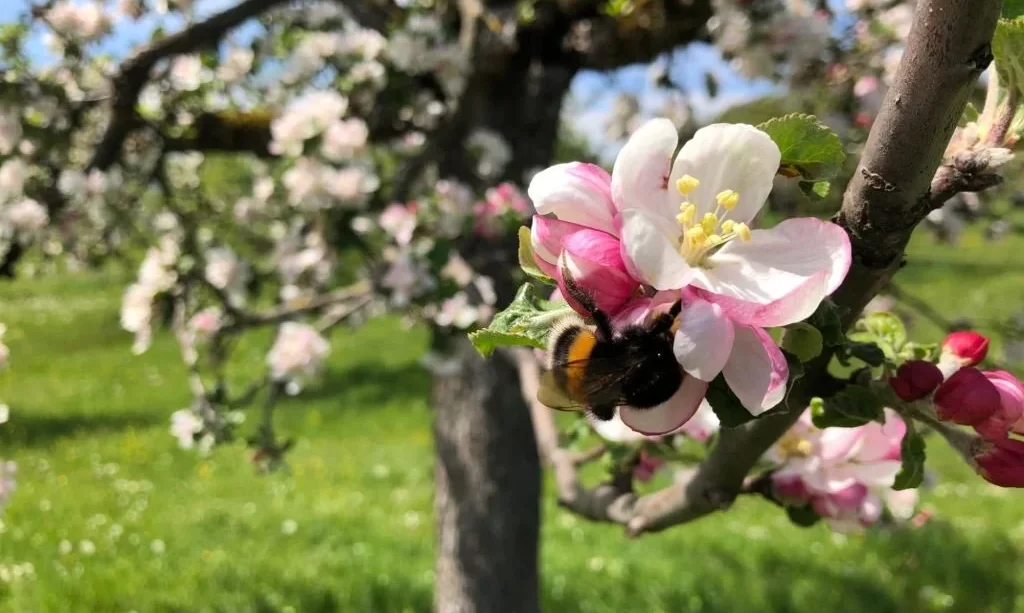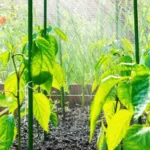In orchards and gardens alike, few sights rival the ethereal beauty of apple tree blossoms. These delicate petals, painted with hues of pink and white, herald the promise of a fruitful harvest to come. Yet, the timing of this magnificent display is a matter of nature’s orchestration, influenced by a symphony of factors. In this exploration, we delve into the captivating world of apple tree blossoms, focusing on the pivotal question: When do apple trees bloom? To unravel this natural marvel, we’ll dissect the apple tree’s growth cycle, consider the role of apple variety, and uncover the secrets behind this annual spectacle.
Apple Tree Growth Cycle
To comprehend when apple trees bloom, we must first grasp the intricacies of their growth cycle. Apple trees, like many deciduous fruit trees, follow a well-defined annual pattern:
- Dormancy: As winter blankets the land, apple trees enter a period of dormancy. During this time, they conserve energy, their branches adorned with dormant buds, patiently awaiting the signals of spring.
- Bud Swelling: With the arrival of spring’s gentle warmth, the apple tree awakens. The buds, tightly shut during winter, begin to swell. This swelling is a telltale sign that the tree is preparing for the spectacle of blossoming.
- Flowering: As the buds continue to swell, they eventually burst open to reveal the stunning apple blossoms. This stage, known as flowering, is a moment of breathtaking beauty and critical importance, as it sets the stage for pollination and the eventual formation of apples.
The Role of Apple Variety
The apple world is a diverse one, with a vast array of apple varieties, each with its own unique characteristics, including bloom times:
- Early-Season Varieties: Some apple varieties, such as ‘Gravenstein’ and ‘Lodi,’ are early bloomers. These trees burst into blossom at the earliest signs of spring, often before other varieties have even begun their bud swelling.
- Mid-Season Varieties: ‘Golden Delicious’ and ‘Fuji’ are examples of mid-season apple varieties. They bloom during the heart of spring, offering a moderate overlap with other apple varieties, making them an attractive choice for orchards.
- Late-Season Varieties: Late-season apple varieties, including ‘Stayman’ and ‘Pink Lady,’ extend the apple blossom season into late spring or early summer. Their blooms follow those of their early and mid-season counterparts, ensuring a more extended pollination window.
Understanding the apple variety you’re working with is a vital key to predicting when your apple trees will burst into their splendid display of blossoms. As we continue our journey into the world of apple tree blossoms, we’ll uncover additional factors that influence this mesmerizing phenomenon, helping you appreciate the beauty and timing of apple tree blooms in all their glory.
- CANNOT SHIP TO AZ, ID, OR, or CA – Due to Federal Restrictions, Pink Lady Apple Trees are unable to be shipped to Arizona, Idaho, Oregon, or California. If you live in one of these states and order this plant, your order will be canceled.
- READY TO PLANT – Your Pink Lady Apple Tree will arrive ready to be planted, it is not full grown or matured yet. You’ll get fruit in a few years.
- EASY TO GROW – Whether you’re an expert or a novice, new to growing your own fruit, our Pink Lady Apple Tree is the perfect cultivar to start with producing abundant late-season fruit.
- HEAT HARDY – Grafted and grown for best results, Pink Lady Apples are consistent in size, shape, color and flavor.
- TART, SWEET, & DELECTABLE – When you first bite into the apple, you get a sharp, tart flavor followed by a rush of sweetness. Perfect for snacking, canning, cooking and even freezing, the Pink Lady is truly versatile.
Blossom Stages and Pollination
Understanding the stages of apple tree bloom and the critical role of pollination in this process is essential:
- Bud Burst: The first stage of apple tree bloom is bud burst, where the tightly closed buds begin to open. At this point, the tree is preparing to reveal its blossoms to the world.
- Full Bloom: The pinnacle of the bloom cycle is full bloom, a breathtaking spectacle where the tree is adorned with a profusion of delicate petals. During this phase, the apple tree is ready for pollination.
- Pollination: Apple trees are not self-pollinating; they rely on the transfer of pollen from one blossom to another. Bees, especially honeybees, play a pivotal role in this process. Adequate pollination during the full bloom phase is crucial for the development of healthy apples.
Monitoring and Predicting Bloom Time
Gardeners and orchardists keen to know precisely when their apple trees will bloom can employ various techniques:
- Chill Hour Models: Some regions use chill hour models, which calculate the accumulation of cold hours during winter. These models help predict the readiness of apple trees to break dormancy and bloom.
- Weather Forecasts: Keep a close eye on weather forecasts as spring approaches. Sudden shifts in temperature or frost warnings can signal the need for protective measures to safeguard blossoms.
- Bud Development: Regularly monitor the development of buds on your apple trees. Swelling buds are a strong indicator that bloom is imminent. This visual observation can be a reliable tool for predicting bloom time.
Conclusion
The timing of apple tree blooms, while influenced by a complex interplay of factors like climate, temperature, and region, remains a breathtaking moment in the annual cycle of these majestic trees. From the quiet dormancy of winter to the explosion of color during full bloom, apple trees captivate our senses and inspire the promise of a bountiful harvest.
As gardeners and orchardists, understanding the nuances of when apple trees bloom allows us to make informed decisions about planting, maintenance, and protective measures. It underscores the delicate balance between nature’s rhythms and our efforts to nurture these remarkable trees.
So, the next time you stand beneath a canopy of apple blossoms, take a moment to appreciate the intricate choreography of nature that brought them to life, and eagerly anticipate the delightful fruit they will soon bestow upon your orchard or garden. The timing of apple tree blooms is a testament to the magic of the natural world, and it is a sight to behold, year after year.






